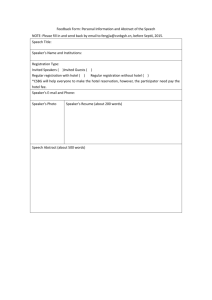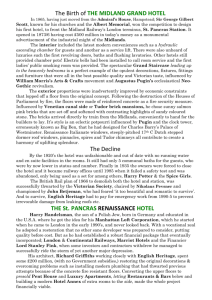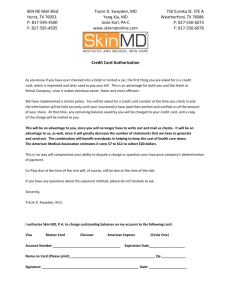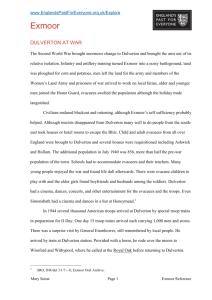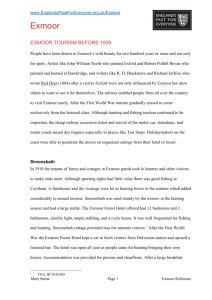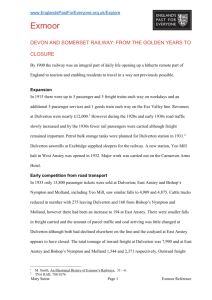CARNARVON ARMS - Victoria County History
advertisement
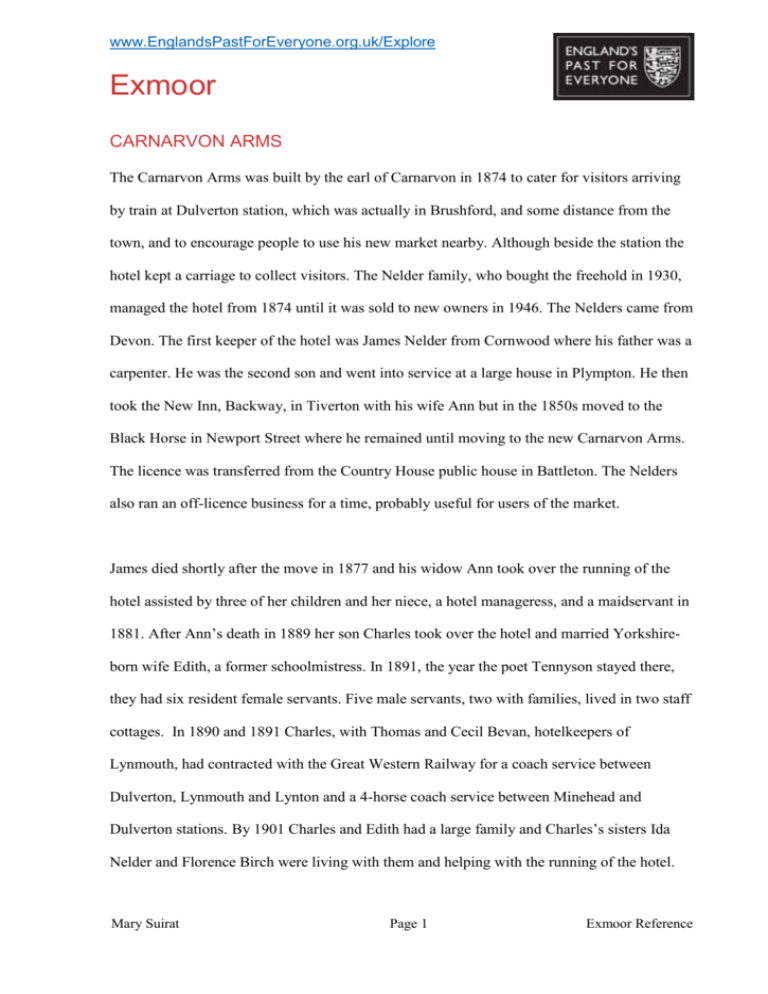
www.EnglandsPastForEveryone.org.uk/Explore Exmoor CARNARVON ARMS The Carnarvon Arms was built by the earl of Carnarvon in 1874 to cater for visitors arriving by train at Dulverton station, which was actually in Brushford, and some distance from the town, and to encourage people to use his new market nearby. Although beside the station the hotel kept a carriage to collect visitors. The Nelder family, who bought the freehold in 1930, managed the hotel from 1874 until it was sold to new owners in 1946. The Nelders came from Devon. The first keeper of the hotel was James Nelder from Cornwood where his father was a carpenter. He was the second son and went into service at a large house in Plympton. He then took the New Inn, Backway, in Tiverton with his wife Ann but in the 1850s moved to the Black Horse in Newport Street where he remained until moving to the new Carnarvon Arms. The licence was transferred from the Country House public house in Battleton. The Nelders also ran an off-licence business for a time, probably useful for users of the market. James died shortly after the move in 1877 and his widow Ann took over the running of the hotel assisted by three of her children and her niece, a hotel manageress, and a maidservant in 1881. After Ann’s death in 1889 her son Charles took over the hotel and married Yorkshireborn wife Edith, a former schoolmistress. In 1891, the year the poet Tennyson stayed there, they had six resident female servants. Five male servants, two with families, lived in two staff cottages. In 1890 and 1891 Charles, with Thomas and Cecil Bevan, hotelkeepers of Lynmouth, had contracted with the Great Western Railway for a coach service between Dulverton, Lynmouth and Lynton and a 4-horse coach service between Minehead and Dulverton stations. By 1901 Charles and Edith had a large family and Charles’s sisters Ida Nelder and Florence Birch were living with them and helping with the running of the hotel. Mary Suirat Page 1 Exmoor Reference There were nine female staff living in; the men boarded out. Guests included a brewer and a timber buyer and one of the men had brought his valet with him.1 One advantage offered by the hotel was free tout fishing on Lord Carnarvon’s stretches of the Barle and Exe. The hotel was the first building in the area, apart from Dulverton Post Office to have a telephone. The number was Dulverton 2. The hotel never made as much profit as expected and money had to be borrowed for investment in extensions and upgrading. The hotel was enlarged by two bays on the main front before 1906 and then altered in 1926, 1932—3, 1945, and 1958—9. The main ranges, forming a T, were three storeys high with a basement, which was above ground level on the north because of the sloping site. There were extensive stables to accommodate visitors’ horses and to house livery horses for guests who had not brought their own.2 The hotel had its own farm, Home Farm, which supplied the hotel with eggs and milk and other produce. Charles Nelder also used the hotel’s sizable yard to trade in coal, coke, salt, tiles, pipe, slate and bricks, which were brought in by rail. The Carnarvon Arms Garage despite the name did not belong to the hotel but for most of the 20th century it was run by members of the Nelder family.3 1 TNA, Census schedules; Wilts RO, 2515/210 box 262/1, box 263/4. SRO, A/BAZ 4/11; Kelly’s Dir. Som. (1883); TNA RG 12/1864, RG 13/22266; Dunster (Homeland Guide, 1906—7). 3 SRO, Exmoor oral history archive. 2 Mary Suirat Page 2 Exmoor Reference COPYRIGHT All rights, including copyright ©, of the content of this document are owned or controlled by the University of London. For further information refer to http://www.englandspastforeveryone.org.uk/Info/Disclaimer Mary Suirat Page 3 Exmoor Reference

